Flood Essay for Students and Children
500+ words essay on flood.
Flood is one of the most dangerous natural disasters. It happens when excessive water is collected in any area. It usually happens due to heavy rainfall. India is highly prone to flood. There are many regions in the country that face this natural disaster because of the overflowing of rivers. Moreover, it also happens because of the melting of snow. Another reason for floods is when the dam breaks down. If we look at the coastal areas, the hurricanes and tsunamis are held responsible for causing floods. In this essay on flood, we will see the prevention and after-affect of flood.

In other words, whatever the cause may be, it is equally dangerous. It has a lot of harmful consequences. Flood damages the living conditions and it takes a lot of time to recover from this disaster. Therefore, the consequences of floods must be known and steps must be taken to prevent it.

After-effects of Flood
Floods interrupt with the day to day functioning of the affected area. The severe floods sometimes cause mass destruction. A lot of people and animals lose their lives due to floods. Several others are injured. Floods also bring a rise in diseases. The stagnant water attracts mosquitoes causing malaria , dengue, and more illnesses.
Furthermore, people face power cuts due to the danger of electrocution. They also have to face expensive pricing. As the supply of food and goods gets limited, the prices naturally grow higher. This creates a big problem for the common man.
Most importantly, the whole country faces economic loss. The resources needed to rescue people and tackle this disaster demands a hefty amount. Plus, the citizens lose their houses and cars which they worked all their lives for.
Subsequently, floods also hamper the environment. It causes soil erosion and this degrades the quality of the soil. We lose out on fertile soil. Similarly, floods also damage flora and fauna. They damage crops and displace trees. Thus, the measure should be taken to avoid these grave consequences.
Get the huge list of more than 500 Essay Topics and Ideas
Ways to Prevent flood
The government and citizens must work together to formulate ways to prevent floods. Proper awareness must be spread about the steps to take when floods occur. Warning systems must be set up so people get sufficient time to save themselves. In addition, areas that are more likely to have floods must have tall buildings above the flood level.

Other than that, dams must be constructed strongly. The use of cheap materials causes dams to break. The government must ensure there is a quality building of dams to prevent floods.
In short, we cannot prevent natural causes like rain and the melting of glaciers. However, we can stop the manmade causes like breaking of dams, poor drainage system, installing warning systems and more. We should take inspiration from countries like Singapore that never experience floods despite having heavy rainfall for most time of the year.
FAQ on Flood Essay
Q.1 what are the consequences of a flood.
A.1 Floods cause immense destruction. They are responsible for the loss of human and animal lives. People lose their homes and cars in floods. They also cause soil erosion and uproot of trees.
Q.2 How can we prevent floods?
A.2 Governments must take up certain measures to prevent floods. We can install flood warning systems. Make people aware of what to do in times of flood. Moreover, we can also build a proper drainage system that will ensure no waterlogging.
Customize your course in 30 seconds
Which class are you in.

- Travelling Essay
- Picnic Essay
- Our Country Essay
- My Parents Essay
- Essay on Favourite Personality
- Essay on Memorable Day of My Life
- Essay on Knowledge is Power
- Essay on Gurpurab
- Essay on My Favourite Season
- Essay on Types of Sports
Leave a Reply Cancel reply
Your email address will not be published. Required fields are marked *
Download the App

- Phone This field is for validation purposes and should be left unchanged.
- Climate Change
- Policy & Economics
- Biodiversity
- Conservation
Get focused newsletters especially designed to be concise and easy to digest
- ESSENTIAL BRIEFING 3 times weekly
- TOP STORY ROUNDUP Once a week
- MONTHLY OVERVIEW Once a month
- Enter your email *
- Name This field is for validation purposes and should be left unchanged.
What Are the Main Causes and Effects of Floods Around the World?
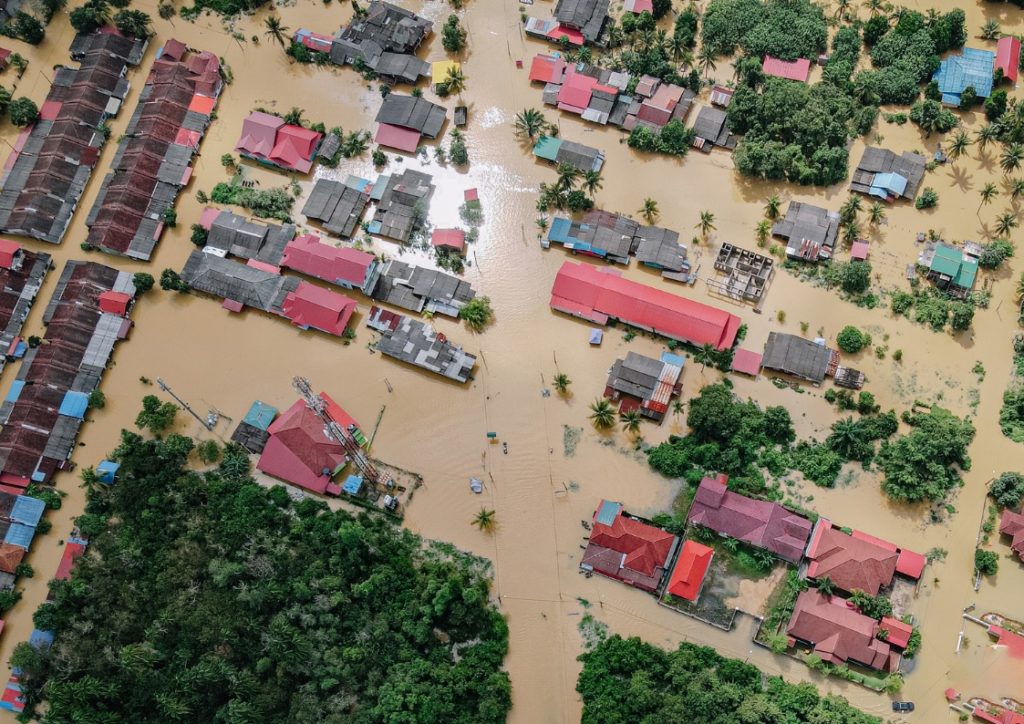
Floods are among the most devastating natural disasters that occur worldwide, affecting millions of people and causing significant damage to both human settlements and the environment. As our planet experiences the impacts of climate change and human activities continue to alter landscapes, understanding the main causes and effects of floods becomes increasingly crucial. In this article, we delve into the factors that contribute to flooding and explore the wide-ranging consequences it has on our ecosystems and communities.
What Are the Different Types of Floods?
Before we examine the causes and effects of floods, it’s important to note that various types of floods can occur worldwide. There are two types of floods that are most common: flash floods and river floods.
Flash floods, as the name suggests, are the rapid rise of water levels from excessive rainfall in low-lying areas. These weather events are incredibly dangerous and can often lead to fatalities due to their destructive power and incredible speed, often not giving people enough time to escape to higher grounds or adopt protective measures. Flash floods tend to be more common in areas with a dry climate and rocky terrain due to lack of soil or vegetation, which acts as a defence or barrier against torrential rains flowing overland.
River flooding on the other hand, occurs when a river overspills its banks and river waters can no longer be contained within its channel. These events are more common in areas with a wetter climate and have longer rainstorm seasons, as well as areas close to melting snow and ice.
What Are the Main Causes of Floods?
Floods can occur due to several different, and often simultaneous, factors. However, one of the biggest causes of floods, especially in cases of flash floods, is excessive and heavy rainfall. When rainfall in low-lying areas and urban environments fall faster than the ground can absorb, water height rapidly rise, resulting in floods. Extreme rainfall in river courses contribute to flooding as well, as water travels down and overflows riverbanks onto surrounding land.
Sea overflow can also cause floods, in an event also known as a storm surge. This occurs during tropical storms, cyclones and hurricanes, where these types of weather events cause sea water to overflow onto the land in coastal regions. Sea water levels have been recorded to rise as high as 20 feet during storm surges.
Rapid melting of snow and ice similarly causes a surge of sea water, while blocks of melting ice could block the flow of a river, creating a phenomenon known as ice jams.
Dam failures and breakage can also send a powerful and destructive surge of water downstream. One of the most devastating dam failures in history took place in 1889 in Johnstown, Pennsylvania . Several days of extraordinarily heavy rain placed severe pressure on the local dam, causing it to fail and releasing 20 million tons of water to the town, and more than 2,200 people died within minutes.
What Are the Biggest Effects of Floods?
More than 2 billion people worldwide were affected by floods between 1998-2017. And that number continues to climb as occurrences of major flood events become more frequent and severe.
Flooding, especially flash floods, can devastate entire cities and urban environments. Throughout history, many have lost their lives as a result of rapid floods, or events caused by severe flooding such as landslides and collapsed infrastructure.
One of the biggest consequences and effects of floods is that people lose their home and property, and essential buildings and infrastructures such as hospitals and elderly homes are left incapacitated. Loss of power and mobile communication is a common occurrence during floods, which can impact livelihoods and access to safety.
Floods can have huge economic repercussions to a region, as extreme weather events impact key industries and sectors, notably agriculture, fishing, food crops, health, labour and tourism. Studies have found that frequent flooding could shave 11% off a region’s GDP by the end of the century. Countries often take years to recover economically following the loss of resources.
People who live in regions close to rivers, in wetter climates and prone to monsoon seasons are significantly more vulnerable to floods. Many south and southeast Asian countries such as Bangladesh – a third of which was under water at one point in 2020 – and India have been particularly hit hard by flood events in recent years due to their low-lying lands and dense populations.
Consequently, there’s been high rates of mass migration and population displacement over the past few decades, causing overcrowding in urban cities and expanding the urban poor. This leads to potential long-term social inequalities and unrest.
You might also like: 86 Million People Have Been Moving Into Global Flood Zones in the Last Two Decades – Study
Climate Change is Exacerbating the Effects of Floods
Flooding has been made more likely by climate change , according to a 2021 study by climate experts. In the case of Western Europe, downpours in the region, which caused the flash floods that killed nearly 200 people, are now 3-19% heavier due to human-caused warming.
For countries that are already prone to rainy seasons, particularly in Asia, climate models predict climate change will lead to more intense flooding and prolong existing monsoon seasons . A typical monsoon season in Asia lasts from June to September. The effects of climate change could potentially result in an earlier arrival or departure of monsoons, disrupting agricultural and crop production, as well as increasing extreme precipitation over the region as more greenhouse gases are released into the atmosphere.
You might also like: Climate Change Made Libya Floods Up to 50 Times More Likely, Study Finds
What Can Be Done?
One of the most salient short-term solutions is for countries, especially those in high flood risk regions, to prioritise investments in flood adaptation strategies. This means building more resilient infrastructure that are designed to withstand floods and water damage.
China, for example, has been investing heavily in ‘sponge city’ concepts , the development of which could potentially help control and mitigate flooding, and recycle rainwater resources and re-instate degraded environments at the same time. Building seawalls can be an effective form of coastal defence and protection in dealing with storm surges and flooding events associated with tropical storms.
Managed retreat, which refers to a purposeful and coordinated movement of people and infrastructure away from high risk areas, is a solution that is worth considering. With more frequent and intense flooding events, forced migration and population displacement is already a growing problem, which as discussed earlier, brings with it a wealth of complex social and economic issues. A managed retreat, which can occur over time and allow systems that account for migrants and displaced people to be in place, can be less traumatic for people and potentially less expensive in the long run.
However ultimately, the most effective way to mitigate climate change and worsening flooding events is to reduce global greenhouse gas emissions. We need to dedicate ourselves to decarbonising transportation and investing a lot more and faster into renewable energy and technologies. While many high income countries such as the US have made net zero goals by 2050 and are pushing for more electric vehicles , a majority of the countries are doing far too little and at too slow a pace to tackle the exacerbating climate crisis.
This story is funded by readers like you
Our non-profit newsroom provides climate coverage free of charge and advertising. Your one-off or monthly donations play a crucial role in supporting our operations, expanding our reach, and maintaining our editorial independence.
About EO | Mission Statement | Impact & Reach | Write for us
About the Author

15 Biggest Environmental Problems of 2024

International Day of Forests: 10 Deforestation Facts You Should Know About

Water Shortage: Causes and Effects
Hand-picked stories weekly or monthly. We promise, no spam!
- Email This field is for validation purposes and should be left unchanged.
Boost this article By donating us $100, $50 or subscribe to Boosting $10/month – we can get this article and others in front of tens of thousands of specially targeted readers. This targeted Boosting – helps us to reach wider audiences – aiming to convince the unconvinced, to inform the uninformed, to enlighten the dogmatic.
- Share full article
Advertisement
How Is Climate Change Affecting Floods?
Like other extreme weather disasters, flooding involves a number of competing factors that may affect its frequency and intensity.

By Elena Shao
- July 10, 2023
Floods can surge all year round, in every region of the world. But discerning the relationship between any given flood and climate change is no small feat, experts say, made difficult by limited historical records, particularly for the most extreme floods, which occur infrequently.
It can be tempting to attribute all floods and other extreme events to the forces of warming planet. But weather is not climate, even though weather can be affected by climate. For example, scientists are confident that climate change makes unusually hot days more common. They’re not as sure that climate change is making tornadoes more severe .
Floods fall somewhere along the confidence spectrum between heat waves (“yes, clearly”) and tornadoes (“we don’t know yet”), said Daniel Swain, a climate scientist at University of California, Los Angeles. “I’d say, ‘yes, probably, but…’”
Flooding, like other disasters, involves a number of competing factors that may affect its frequency and intensity in opposing ways. Climate change, which is worsening extreme rainfall in many storms, is an increasingly important part of the mix.
What causes floods
Several main ingredients contribute to flood development: precipitation, snowmelt, topography and how wet the soil is. Depending on the type of the flood, some factors may matter more than others.
For example, a river flood, also known as a fluvial flood, occurs when a river, stream or lake overflows with water, often following heavy rainfall or quickly melting snow. A coastal flood occurs when land areas near the coast are inundated by water, often following a severe storm that collides with high tides.
Flooding can also happen in areas with no nearby bodies of water. Flash floods, in particular, can develop anywhere that experiences intense rainfall over a short period of time.
How floods are measured
Many metrics are used to measure floods, including stage height (the height of the water in a river relative to a specific point) and flow rate (how much water passes by a specific location over a particular time period).
To describe the severity of a flood, though, experts will often use the more simple term “a 100-year flood,” to describe a flood that has a 1 percent chance of striking in any given year, considered an extreme and rare occurrence. The term is just a description of likelihood, though, not a promise. A region can have two 100-year floods within a few years.
Have floods increased in past decades?
Not exactly. Climate change has undoubtedly intensified heavy precipitation events, but, unexpectedly, there has been no corresponding increase in flood events .
When it comes to river floods, climate change is likely exacerbating the frequency and intensity of the extreme flood events, but decreasing the number of moderate floods, researchers found in a 2021 study published in Nature .
As the climate warms, higher rates of evaporation cause soils to dry out more rapidly. For those moderate and more commonplace floods, the initial conditions of soil moisture is important, since drier soils may be able to absorb most of the rainfall.
With larger flood events, that initial soil moisture matters less “because there’s so much water that the soil wouldn’t be able to absorb all of it, anyway,” said Manuela Brunner, a hydrologist at the University of Freiburg in Germany and the lead author of the 2021 study. Any additional water added past the point where the soil is fully saturated will run off and contribute to flood development, Dr. Brunner said.
Looking to the future
Scientists are confident some types of flooding will increase in the “business as usual” scenario where humans continue warming the planet with greenhouse gas emissions at the current rate.
First, coastal flooding will continue to increase as sea levels rise. Melting glaciers and ice sheets add volume to the ocean, and the water itself expands as it warms.
Second, flash flooding will continue to increase as there are more extreme precipitation events. Warmer temperatures increase evaporation, putting more moisture into the atmosphere that then gets released as rain or snowfall.
Researchers also expect that, as the climate warms, flash floods will get “flashier,” meaning that the timing of the floods will get shorter while the magnitude gets higher. Flashier floods can be more dangerous and destructive.
Flash floods may also increasingly follow catastrophic wildfires in a deadly cascade of climate disasters. That’s because wildfires destroy forests and other vegetation, which in turn weakens the soil and makes it less permeable.
If heavy rains occur on land damaged by a fire, the water “does not get absorbed by the land surface as effectively as it once did,” said Andrew Hoell, a meteorologist at the National Oceanic and Atmospheric Administration’s Physical Sciences Lab.
Though it may be counterintuitive to see the two extremes, too much fire and too much water, in the same region, the sight will most likely become more common, particularly in the American West.
Are different areas experiencing flooding?
In a recent paper published in Nature , researchers found that in the future, flash floods may be more common father north, in Northern Rockies and Northern Plains states.
This poses a risk for flood mitigation efforts, as local governments may not be aware of the future flash flood risk, said Zhi Li, lead author of the 2022 study.
The pattern is driven by more rapidly melting snow, and snow that melts earlier in the year, Dr. Li said. Regions at higher latitudes may experience more “rain-on-snow” floods like those that surged through Yellowstone in June .
Elena Shao is a reporter and graphics editor based in New York. More about Elena Shao
Learn More About Climate Change
Have questions about climate change? Our F.A.Q. will tackle your climate questions, big and small .
Giant batteries are transforming the way the United States uses electricity. Here’s how .
Are carbon offsets for air travel worth it? A lot of them don’t work and some might even be harmful, but there are alternatives .
Cattle ranches have ruled the Amazon for decades. Now, new companies are selling something else: the ability of trees to lock away planet-warming carbon .
“Buying Time,” a series from The New York Times, looks at the risky ways humans are starting to manipulate nature to fight climate change.
Did you know the ♻ symbol doesn’t mean something is actually recyclable ? Read on about how we got here, and what can be done.
- 0 Shopping Cart

How does flooding affect humans and the environment?
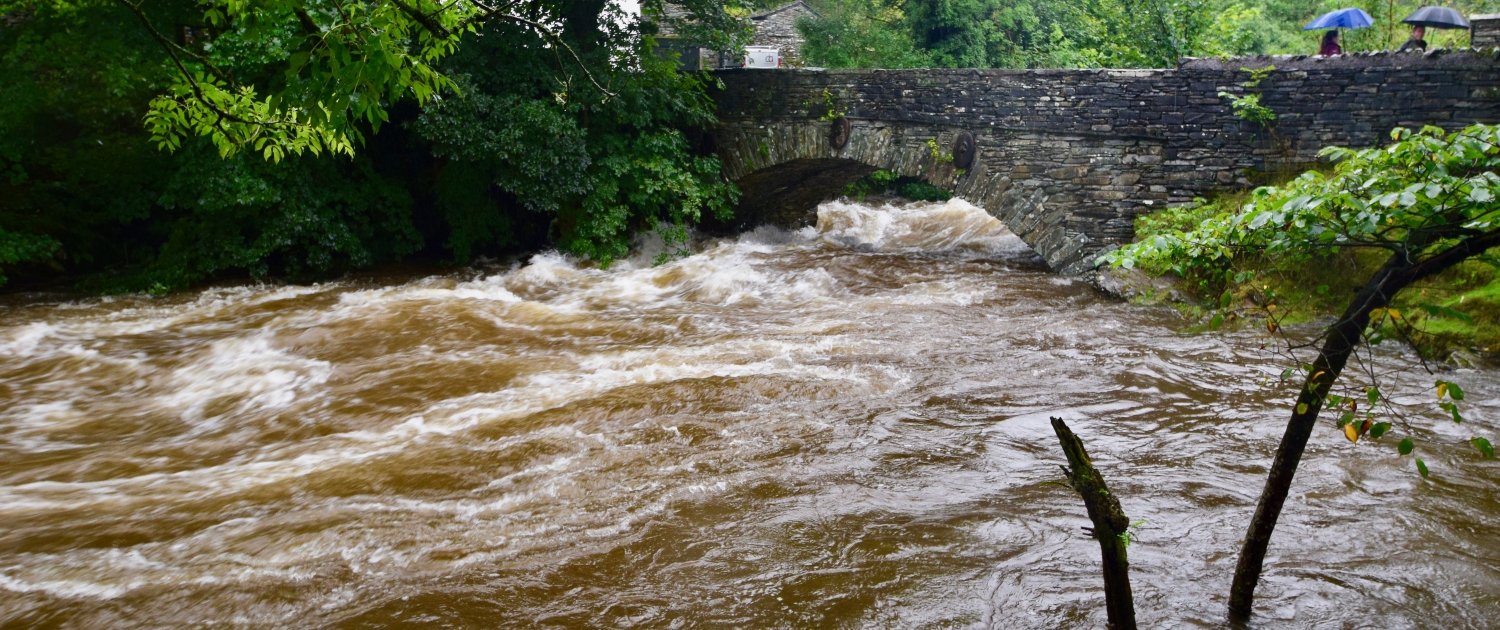
Impact of flooding on humans
Flooding has a range of impacts on humans, including:
- people can be injured or killed by flooding
- floodwater is often contaminated with sewage, which can lead to illness and affect clean drinking water
- power supplies can be disrupted
- businesses can be forced to shut down
- services such as hospitals and schools can close
- transport networks can be affected, such as flood damage to bridges, railways and roads
- homes and properties can be flooded
- people may have to move out of their properties until flood damage is repaired
- possesions can be damaged and washed away
Impact of flooding on the environment
Flooding has a range of impacts on the environment, including:
- wildlife habitats can be destroyed by floodwater
- contaminated floodwater can pollute rivers and habitats
- silt and sediment can destroy crops on farms
- river banks and natural levées can be eliminated as rivers reach bankfull capacity
- rivers can be widened, and deposition can increase downstream
- trees can be uprooted by high-velocity water flow
- plants that survive the initial flood may die due to being inundated with water

Premium Resources
Please support internet geography.
If you've found the resources on this page useful please consider making a secure donation via PayPal to support the development of the site. The site is self-funded and your support is really appreciated.
Related Topics
Use the images below to explore related GeoTopics.
Human and physical factors causing river flooding
Topic home, the river tees – landscapes of erosion and deposition, share this:.
- Click to share on Twitter (Opens in new window)
- Click to share on Facebook (Opens in new window)
- Click to share on Pinterest (Opens in new window)
- Click to email a link to a friend (Opens in new window)
- Click to share on WhatsApp (Opens in new window)
- Click to print (Opens in new window)
If you've found the resources on this site useful please consider making a secure donation via PayPal to support the development of the site. The site is self-funded and your support is really appreciated.
Search Internet Geography
Top posts and pages.
Latest Blog Entries
Pin It on Pinterest
- Click to share
- Print Friendly
Thank you for visiting nature.com. You are using a browser version with limited support for CSS. To obtain the best experience, we recommend you use a more up to date browser (or turn off compatibility mode in Internet Explorer). In the meantime, to ensure continued support, we are displaying the site without styles and JavaScript.
- View all journals
- Explore content
- About the journal
- Publish with us
- Sign up for alerts
- 07 March 2023
Flash floods: why are more of them devastating the world’s driest regions?
- Jie Yin 0 ,
- Yao Gao 1 ,
- Ruishan Chen 2 ,
- Dapeng Yu 3 ,
- Robert Wilby 4 ,
- Nigel Wright 5 ,
- Yong Ge 6 ,
- Jeremy Bricker 7 ,
- Huili Gong 8 &
- Mingfu Guan 9
Jie Yin is a professor in the Key Laboratory of Geographic Information Science, Ministry of Education, East China Normal University, Shanghai, China.
You can also search for this author in PubMed Google Scholar
Yao Gao is a senior researcher in the Department of Civil Engineering, University of Hong Kong, Hong Kong, China, and at the Finnish Meteorological Institute, Helsinki, Finland.
Ruishan Chen is a professor at the School of Design, Shanghai Jiao Tong University, China.
Dapeng Yu is professor of river dynamics in Geography and Environment, Loughborough University, Loughborough, UK.
Robert Wilby is professor of hydroclimatic modelling in Geography and Environment, Loughborough University, Loughborough, UK.
Nigel Wright is professor of water and environmental engineering in the School of Engineering, University of Birmingham, UK.
Yong Ge is professor of geographical information science at the State Key Laboratory of Resources and Environmental Information System, Institute of Geographic Sciences and Natural Resources Research, Chinese Academy of Sciences, Beijing, China.
Jeremy Bricker is an associate professor in the Department of Civil & Environmental Engineering, University of Michigan, Ann Arbor, Michigan, USA, and in the Department of Hydraulic Engineering, Delft University of Technology, the Netherlands.
Huili Gong is a professor at the College of Resource Environment and Tourism, Capital Normal University, Beijing, China.
Mingfu Guan is assistant professor of hydro-environment and geohazard in the Department of Civil Engineering, the University of Hong Kong, Hong Kong.
A family navigates flood waters to reach a village in Mehar, Pakistan, after heavy rains in August 2022. Credit: Akhtar Soomro/Reuters
Last year, around two-thirds of Pakistan was affected by widespread flash flooding, with more than 1,500 people killed and around 33 million made homeless . Almost 2,000 people died in flash floods across Africa, and parts of the United Arab Emirates, Iran, Saudi Arabia, Qatar, Oman and Yemen were inundated with water.
Access options
Access Nature and 54 other Nature Portfolio journals
Get Nature+, our best-value online-access subscription
24,99 € / 30 days
cancel any time
Subscribe to this journal
Receive 51 print issues and online access
185,98 € per year
only 3,65 € per issue
Rent or buy this article
Prices vary by article type
Prices may be subject to local taxes which are calculated during checkout
Nature 615 , 212-215 (2023)
doi: https://doi.org/10.1038/d41586-023-00626-9
Donat, M. G., Lowry, A. L., Alexander, L. V., O’Gorman, P. A. & Maher, N. Nature Clim. Change 6 , 508–513 (2016).
Article Google Scholar
Guerreiro, S. B. et al. Nature Clim. Change 8 , 803–807 (2018).
Fowler, H. J. et al. Nature Rev. Earth Environ. 2 , 107–122 (2021).
Huang, J., Yu, H., Guan, X., Wang, G. & Guo, R. Nature Clim. Change 6 , 166–171 (2016).
Ren, Q. et al. Nature Sustain. 5 , 869–878 (2022).
Rentschler, J., Salhab, M. & Jafino, B. A. Nature Commun. 13 , 3527 (2022).
Article PubMed Google Scholar
Logan, T. M., Guikema, S. D. & Bricker, J. D. Nature Sustain . 1 , 526–530 (2018).
Hino, M., Field, C. B. & Mach, K. J. Nature Clim. Change 7 , 364–370 (2017).
Jongman, B. et al. Nature Clim. Change 4 , 264–268 (2014).
Bubeck, P., Botzen, W. J. W. & Aerts, J. C. J. H. Risk Anal. 32 , 1481–1495 (2012).
Aerts, J. C. J. H. et al. Nature Clim. Change 8 , 193–199 (2018).
Dawson, R. J. et al. Glob. Environ. Change 21 , 628–646 (2011).
Download references
Reprints and permissions
Competing Interests
The authors declare no competing interests.
Related Articles

- Environmental sciences
- Climate change

Diana Wall obituary: ecologist who foresaw the importance of soil biodiversity
Obituary 10 MAY 24

Reinvent oil refineries for a net-zero future
Editorial 08 MAY 24
Why it was right to reject the Anthropocene as a geological epoch
Correspondence 30 APR 24

The Maldives is racing to create new land. Why are so many people concerned?
News Feature 24 APR 24
The Middle East’s largest hypersaline lake risks turning into an environmental disaster zone
Correspondence 23 APR 24

Nearly half of China’s major cities are sinking — some ‘rapidly’
News 18 APR 24
Finding millennia-old ‘monumental’ corals could unlock secrets of climate resilience
Correspondence 07 MAY 24
Countering extreme wildfires with prescribed burning can be counterproductive

Support communities that will lose out in the energy transition
Editorial 01 MAY 24
2024 Recruitment notice Shenzhen Institute of Synthetic Biology: Shenzhen, China
The wide-ranging expertise drawing from technical, engineering or science professions...
Shenzhen,China
Shenzhen Institute of Synthetic Biology
Head of Operational Excellence
In this key position, you’ll be responsible for ensuring efficiency and quality in journal workflows through continuous improvement and innovation.
United States (US) - Remote
American Physical Society
Rowland Fellowship
The Rowland Institute at Harvard seeks outstanding early-career experimentalists in all fields of science and engineering.
Cambridge, Massachusetts
Rowland Institute at Harvard
Postdoctoral Fellowship: Chemical and Cell Biology
The 2-year fellowship within a project that will combine biochemical, cell biological and chemical genetic approaches to elucidate migrasome biology
Umeå, Sweden
Umeå University
Clinician Researcher/Group Leader in Cancer Cell Therapies
An excellent opportunity is available for a Group Leader with expertise in cellular therapies to join the Cancer Research program at QIMR Berghofer.
Herston, Brisbane (AU)
QIMR Berghofer
Sign up for the Nature Briefing newsletter — what matters in science, free to your inbox daily.
Quick links
- Explore articles by subject
- Guide to authors
- Editorial policies
Home — Essay Samples — Environment — Flood — The Flood: Reflection and Mitigating the Impact
The Flood: Reflection and Mitigating The Impact
- Categories: Flood Natural Disasters
About this sample

Words: 652 |
Published: Mar 16, 2024
Words: 652 | Page: 1 | 4 min read
Table of contents
The impact of floods, factors contributing to floods, measures to mitigate flood effects.

Cite this Essay
Let us write you an essay from scratch
- 450+ experts on 30 subjects ready to help
- Custom essay delivered in as few as 3 hours
Get high-quality help

Dr. Karlyna PhD
Verified writer
- Expert in: Environment

+ 120 experts online
By clicking “Check Writers’ Offers”, you agree to our terms of service and privacy policy . We’ll occasionally send you promo and account related email
No need to pay just yet!
Related Essays
1 pages / 384 words
2 pages / 716 words
4 pages / 2042 words
1 pages / 574 words
Remember! This is just a sample.
You can get your custom paper by one of our expert writers.
121 writers online
Still can’t find what you need?
Browse our vast selection of original essay samples, each expertly formatted and styled
Related Essays on Flood
Climate change is an ever-present global challenge that continues to have far-reaching impacts on our planet. One of the most pressing consequences of climate change is the increase in environmental disasters, particularly [...]
Public policy plays a crucial role in managing the delicate balance between development and environmental preservation. As cities around the world grapple with the challenges of urbanization, policymakers face the daunting task [...]
Climate change, a ubiquitous and pressing issue in today's world, not only poses environmental challenges but also raises ethical dilemmas that demand attention and reflection. The impacts of climate change are disparately [...]
The 2022 New York flooding event has been a wake-up call for many, signaling the urgent need for climate action and resilience building in the face of extreme weather events. This essay will delve into the aftermath of the [...]
Flood is one of the main and most frequent natural disasters in the world (Jiang et al. , 2006). As revealed by World Meteorological Organization (WMO, 2014), storms and floods accounted for 79 percent of total number of [...]
Floods are natural occurring processes that are difficult to prevent but can be managed to reduce its social and economic impacts. Flooding is a threat to life and leads to damage of property. Therefore, it is very important [...]
Related Topics
By clicking “Send”, you agree to our Terms of service and Privacy statement . We will occasionally send you account related emails.
Where do you want us to send this sample?
By clicking “Continue”, you agree to our terms of service and privacy policy.
Be careful. This essay is not unique
This essay was donated by a student and is likely to have been used and submitted before
Download this Sample
Free samples may contain mistakes and not unique parts
Sorry, we could not paraphrase this essay. Our professional writers can rewrite it and get you a unique paper.
Please check your inbox.
We can write you a custom essay that will follow your exact instructions and meet the deadlines. Let's fix your grades together!
Get Your Personalized Essay in 3 Hours or Less!
We use cookies to personalyze your web-site experience. By continuing we’ll assume you board with our cookie policy .
- Instructions Followed To The Letter
- Deadlines Met At Every Stage
- Unique And Plagiarism Free
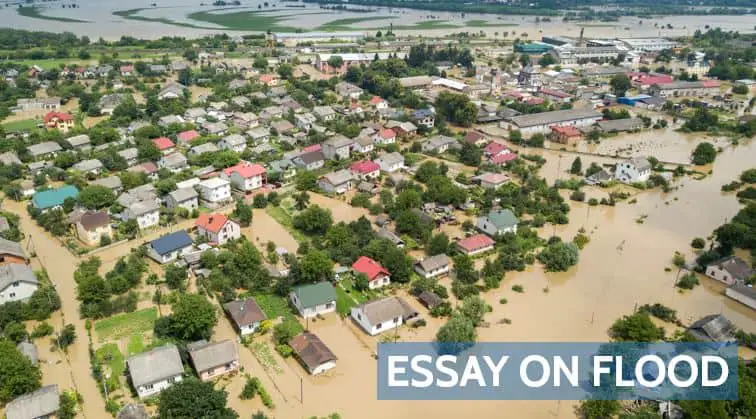
Essay on Flood for Students and Children in 1000+ Words
In this post read an Essay on Flood (Natural Disaster) for Students and Children in 1000+ Words.
Table of Contents
Essay on Flood (1000+ Words)
This essay includes what is flood?, its causes, effect, and preventive measures.
What is Flood?
A flood is a natural disaster that arises due to excessive runoff of water in the rivers due to rainfall . This causes the water of rivers to come out from the edges and flow into the plains. Floods can last from a few hours to a few days, but it can cause great harm to people, money and crops.
Causes of Flood
Among the most severe natural hazards are floods. This happens in every environment where excessive water is stored. Generally, it is heavy rainfall. In India, there is a strong probability of floods.
Due to heavy river rains, several places in the world face natural disaster . Besides, the breaking of the dam is another cause of a flood. Furthermore, this is also triggered by melting ice.
If we aim at coastal regions, floods are liable for hurricanes or tsunamis. We should look at flood avoidance and its long term side-effects throughout this essay about floods. Nevertheless, it really is equally risky, but whatever cause might be.
This has some negative effects. Floods cause harm to living conditions or recovery from this tragedy takes a very long time. The effects of flooding should therefore be understood, and steps should be taken to avoid them.
Effect of Flood
The day-to-day operation of the flood-affected region was disrupted. Extreme floods cause immense devastation often. Owing to flooding, many individuals, or animals risk their lives. Many more are being wounded. Floods raise illnesses, as well. Stagnant weather, due to malaria, dengue, and much more illnesses, attracts insects.
Moreover, due to electrical risks, individuals face power outages. They face expensive costs, too. Prices inevitably rise as the availability of food and products become reduced.
This, for the average man, is a big issue. Most significantly, economic losses are suffered by the entire world. To save lives and deal with this tragedy, a huge amount of resources are needed. At the very same time, people are losing their homes or their vehicles, which they have dedicated all their lives to.
Floods also ultimately damage the climate. This triggers soil erosion which degrades the consistency of the soil. On a fertile planet, we are destroyed.
Floods also do damage to fauna and flora in the same way. Crops are destroyed, & trees are displaced. Steps to prevent these serious effects should also be taken.
Ways to Prevent flood
To devise solutions to avoid flooding, government and people must work together. Proper knowledge of these steps can be taken and disseminated in the aftermath of a natural disaster.
In order for people to get enough time to defend themselves, an alert system must be established. Furthermore, areas more vulnerable to flooding must have elevated buildings just above the point of flooding.
In addition, an effective system for processing excessive water due to bad weather should be usable. Excess water can avoid this. Reinforcing the drainage scheme is among the most critical steps. This will eliminate water-logging, to prevent flooding.
The dams must, however, be heavily built. The use of inexpensive materials breaks dams must be applied and government should ensure that the efficiency of dams is designed to stop flooding.
We have split the causes of floods into two stages viz: organic and inorganic floods. First, natural floods would be addressed.
Natural floods
Floods are called natural floods due to natural factors.
1. Excess of rain – often at one location there is a lot of constant rainfall due to that there is water logging all over, and it comes in the form of flooding in a certain period.
2. Cloud Burst -A large volume of water that flows in the next few hours due to bursting of a cloud, because from which the water flows at a high pace as well as a flood situation occurs, the clouds mainly burst and in mountain terrain. Due to thunderstorm, the Uttarakhand region is flooded every other year in their region.
3. Melting of ice from the glacier- The glaciers are starting to melt even more snow owing to the increase in the Earth’s temperature that causes the water to fall from the mountains at a high velocity so this water has become so high. That one can easily knock out every town or village and fully submerge it.
4. When rivers are overflowing- A significant volume of drainage into the rivers is caused by excess rainfall and melting snow, allowing the water to abandon its course and flow around rather than flood its lowlands of cities and villages near the river , it goes.
5. Sea Flood – A tsunami is often considered the first flood of water. This happens when in certain areas of a sea, a cyclonic storm or even a powerful earthquake happens, due to that, high waves increase, or the seawater floods the villages and cities. This refers to areas for flooding. Because of this, many coastal communities of the sea are impacted very badly. Sea storm waves could be as higher than 10 feet, and that’s much more than the height of every building.
Unnatural floods
The work undertaken by human’s triggers unnatural floods are:
1. Dam Breakdown – Large reservoirs are designed for water storage by humans; however, the dam is not reinforced due of corruption and bad design that breaks up a dam full of thousands of liters of water in the next few years.
There is a heavy flow of water with this and the areas from around the dam were covered in water. Suddenly, the ward arrives, so citizens do not get an opportunity to regain, and there is further loss of life or property.
2. Flooding due to Global Warming – Global Warming This scenario has been produced by humans just because humans are harvesting indiscriminate trees, and also spreading a huge amount of pollution .
Since the global climate is rising while at the same time that Earth’s climate is also shifting because there is a lot of rain for certain areas, there is a lot of rain in certain areas and because of the increase in the temperature of the Earth, the ice mostly on glaciers Millions of liters of water accumulated in the form begins to melt because of the water crisis.
3. Plastic pollution – A large volume of plastic is often used in India, and this plastic is dumped in such open areas, however, this plastic is stuck in the hair created to drain the water because the water may not get in the hair when it rains as well as the flood situation occurs.
10 Lines on Flood
- The flood is an immense quantity of water that overflows covering a wide region that causes damage.
- Not only is the flood devastating a vast city, but it also takes several lives or destroys property.
- Each year, many regions of the world are hit by flooding, taking lots of lives.
- Lead to increasing rainfall or a lack of proper sewage system inside an area, flooding occurs.
- In an area that causes double harm, floods often occur like an after-effect of a horrible cyclone.
- The farmers have to be the worst impacted citizens of the flood as flood kills their fields and also their land’s productivity.
- Flood water obtained at a specific location allows individuals to have different kinds of diseases.
- When the flood situation is serious, all the stores are closed, affecting the availability of essential products.
- In order to reduce the effects of flooding, the government must develop a strong drainage system.
- Early warning implementation must be carried out, and individuals are sent to safe areas until floods occur.
In short, natural factors, such as rain or melting glaciers, could not be avoided. We may escape human-made triggers, however, like dam breakage, bad drainage systems, installation of alarm systems, and much more. We must draw inspiration in countries such as Singapore that, for much of the year, do not experience floods despite heavy rain.

Leave a comment Cancel reply

The Many Effects of Flooding
Floods can be destructive to humans and the natural environment, but they also help to drive biodiversity and are essential to the functioning of many ecosystems.
Earth Science, Climatology, Geography, Physical Geography
1931 Yangtze River Flood
In 1931, water overwhelmed the banks of the Yangtze and Huai Rivers, resulting in the Central China flood. Killing at least hundreds of thousands and potentially millions of people, it was one of the worst flooding events in recorded history. Here, people near the Yangtze River are shown.
Photograph from Adrienne Livesey, Elaine Ryder, and Irene Brien

Rivers have been important to humans throughout history. They provide food, freshwater, and fertile land for growing crops. Water is needed for life, but it can also be destructive. In many cases, the flooding of rivers can have terrible effects. Flooding is one of the most common types of natural disaster, and the results are often deadly. A 1931 flood in China was one of the worst flooding events in recorded history. As many as several million people died. Floods affect humans, but they also affect the environment. Their effects are not always bad, however. In fact, some ecosystems depend on flooding during certain seasons. Floods Can Cause Harm Flooding can harm wildlife. The water can drown animals and destroy habitats . For example, a flood in India in 2012 killed many one-horned rhinos ( Rhinoceros unicornis ). Floodwaters can pick up dirt from riverbanks. Particles of mud and dirt float in the water. These particles are known as sediment. If the water becomes filled with sediment, it appears dirty. Too much sediment blocks rivers and streams from flowing. This can kill water-dwelling animals and destroy habitats. Floodwater can carry pollution too. These pollutants can include pesticides , garbage, or sewage. Sometimes, polluted floodwater can run into the ocean. This can harm marine life. Floods can also lead to disease outbreaks. Some deadly diseases live in water. These include hepatitis A and cholera. Floodwaters can carry these diseases and make people sick. Floods are not always bad. Sometimes, seasonal floods are necessary to bring new life to ecosystems. Some Floods Are Helpful Floods carry important nutrients to the surrounding land. When the floodwaters dry up, they leave sediment behind. This sediment is a natural fertilizer. It improves the quality of the dirt and encourages plants to grow. Egypt's Nile River floods every year. The ancient Egyptians built their first cities along the Nile. The river's floods made the nearby soil perfect for growing food. Floods can refill pools of freshwater underground. Floodwater sinks into the ground. Then, it drips through layers of dirt and rock. After a while, the water reaches underground bodies of water called aquifers . These aquifers supply clean freshwater to springs, lakes, and rivers. In dry seasons, this groundwater may be the only supply of freshwater to a region. Helping Fish, Boosting Water Supplies Some animals use seasonal floods as a sign. The floods may signal that it is time to mate or migrate. When an animal migrates, it moves from one habitat to another. For example, in 2016, a flood triggered thousands of birds to migrate from their wetland habitat to the Macquarie Marshes in Australia. Small seasonal floods can be good for fish. During floods, sediment is left behind on riverbeds . Sediment can provide a place for baby fish to grow. The floodwater also carries nutrients that small animals eat. Floods can help refill freshwater supplies. They can keep lakes from drying up. Floods also help marshes and swamps. Many animals depend on marshes and swamps. In dry seasons, they might dry up. But floods help refill the wetlands and keep the ecosystem going. Floods are a force of nature. They can both help and harm the ecosystems they affect. Floods can be destructive to humans and the environment. But they are also necessary to keep some ecosystems alive.
Media Credits
The audio, illustrations, photos, and videos are credited beneath the media asset, except for promotional images, which generally link to another page that contains the media credit. The Rights Holder for media is the person or group credited.
Production Managers
Program specialists, last updated.
January 22, 2024
User Permissions
For information on user permissions, please read our Terms of Service. If you have questions about how to cite anything on our website in your project or classroom presentation, please contact your teacher. They will best know the preferred format. When you reach out to them, you will need the page title, URL, and the date you accessed the resource.
If a media asset is downloadable, a download button appears in the corner of the media viewer. If no button appears, you cannot download or save the media.
Text on this page is printable and can be used according to our Terms of Service .
Interactives
Any interactives on this page can only be played while you are visiting our website. You cannot download interactives.
Related Resources
- Skip to main content
- Skip to secondary menu
- Skip to primary sidebar
- Skip to footer
Study Today
Largest Compilation of Structured Essays and Exams
Flood Causes, Effects, & Prevention Essay for Children
December 24, 2017 by Study Mentor Leave a Comment
Flood is an overflow of water on land. It causes sometimes because of overflow of river water, it also causes due to heavy rainfall and overflow becomes out of limit.
During flood condition of people and animals becomes very critical. Always it is not necessary that because of heavy rainfall flood occurs; it can also be caused due to storm and tsunami in coastal areas.
All the heavy rainfalls flow to low land and rivers, and when the water over flows the river banks then that is called as flood. Sometimes it also causes due to melting of snow on mountains. And when it reaches to the surface it causes flood.
Table of Contents
Causes of flood
Mostly flooding occurs due to heavy rainfall, during this time natural water becomes the reason for flood and also on land if the capacity of water fills then the overflow of water takes place.
It is not necessary that flood is always caused due to heavy rainfall, there are other reasons as well for the cause of flood such as
- Storm surge
- Tropical cyclone
- High tide coinciding with higher than normal river levels
- Dam failure
- Earthquake triggering in downstream area
- Ground cover
- Tidal influences
Effects of flood
Flood can cause devastating consequences to environment, people and economy.

Economic effects
In the time of flood most of the roads, bridges, farms, and houses gets damaged. It affects the daily routine of travelling. Most of the automobiles get destroyed because of flood. People become homeless and finds new place for their survival.
For people it becomes very hectic to restart their schedule. Due to it transportation gets affected. It takes years to rebuild the new infrastructure damaged due to flood.
Environment
When flood occur environment also suffers a lot. Most of the chemicals those got damaged due to flood gets contaminated in water and pollutes water. Chemicals also contaminate in bodies and affect our body.
Flooding also causes massive leakages in nuclear plants and because of it high radiation causes and radioactive pollution causes. Flood causes killing people animals and plants. It affects people a lot economically, mentally and physically.
It destroys the natural balance of life and ecosystem.
People and animals
Many people and animals get affected due flash flood. Many of the people get injured and many people become homeless. Disruption of water and electricity makes people suffer and struggle a lot. Flooding brings lots of disease and infections including pneumonia, fever and dysentery. It water snakes and insects causes a lot of havoc.
Sometimes flood comes all of a sudden. And the people who are not prepared for flood suffer a lot sometimes their belongings get flushed away and sometimes people become homeless. Floods destroy crops in the field and also cause epidemics. Many people loss their resources and tools. Often entire families get washed away in flood.
Flood also damages railway lines and affects the transport.
Prevention from flood
Humans are unable to stop the rain fall, but they can do something to get prevention from it.
Sea defence walls
To prevent nature from high tides sea wall and tide gates are built. Sand bags are placed in strategic areas to retain flood waters.
Retaining walls
To control and save extra water during floods in some area retaining walls are made like dams, lakes, ponds and reservoir so that they store water in it.
Town planning
Before buildings are built it is necessary to check that ways of water are not blocked. Drainage systems should be kept free from objects that chock them. Drainage system should be covered to prevent insects and other animals from getting into the container.
Trees, grass help to protect the land from nutritious free. People use the method of vegetation to protect themselves of moving flood water.
Without the proper knowledge it becomes very difficult for people to survive from flood. Education is very important to inform people about the dangerous effects of flood. Without proper knowledge it becomes very difficult for people to get cure.
Flood relief measures
During the time of flood the government of India adopts various methods to prevent the people from suffering. They provide short term and long term relief. Short term relief means immediate relief like food, cloth and medicines. Long terms mean free distribution of remission of rent.
All this requires great engineering and heavy expenses. Government also provides funds.
In spite of bad effects of flood there are good effects of flood as well. The flood that occurs in floodplains and farm fields has good effects.
Reader Interactions
Leave a reply cancel reply.
Your email address will not be published. Required fields are marked *
Top Trending Essays in March 2021
- Essay on Pollution
- Essay on my School
- Summer Season
- My favourite teacher
- World heritage day quotes
- my family speech
- importance of trees essay
- autobiography of a pen
- honesty is the best policy essay
- essay on building a great india
- my favourite book essay
- essay on caa
- my favourite player
- autobiography of a river
- farewell speech for class 10 by class 9
- essay my favourite teacher 200 words
- internet influence on kids essay
- my favourite cartoon character
Brilliantly
Content & links.
Verified by Sur.ly
Essay for Students
- Essay for Class 1 to 5 Students
Scholarships for Students
- Class 1 Students Scholarship
- Class 2 Students Scholarship
- Class 3 Students Scholarship
- Class 4 Students Scholarship
- Class 5 students Scholarship
- Class 6 Students Scholarship
- Class 7 students Scholarship
- Class 8 Students Scholarship
- Class 9 Students Scholarship
- Class 10 Students Scholarship
- Class 11 Students Scholarship
- Class 12 Students Scholarship
STAY CONNECTED
- About Study Today
- Privacy Policy
- Terms & Conditions
Scholarships
- Apj Abdul Kalam Scholarship
- Ashirwad Scholarship
- Bihar Scholarship
- Canara Bank Scholarship
- Colgate Scholarship
- Dr Ambedkar Scholarship
- E District Scholarship
- Epass Karnataka Scholarship
- Fair And Lovely Scholarship
- Floridas John Mckay Scholarship
- Inspire Scholarship
- Jio Scholarship
- Karnataka Minority Scholarship
- Lic Scholarship
- Maulana Azad Scholarship
- Medhavi Scholarship
- Minority Scholarship
- Moma Scholarship
- Mp Scholarship
- Muslim Minority Scholarship
- Nsp Scholarship
- Oasis Scholarship
- Obc Scholarship
- Odisha Scholarship
- Pfms Scholarship
- Post Matric Scholarship
- Pre Matric Scholarship
- Prerana Scholarship
- Prime Minister Scholarship
- Rajasthan Scholarship
- Santoor Scholarship
- Sitaram Jindal Scholarship
- Ssp Scholarship
- Swami Vivekananda Scholarship
- Ts Epass Scholarship
- Up Scholarship
- Vidhyasaarathi Scholarship
- Wbmdfc Scholarship
- West Bengal Minority Scholarship
- Click Here Now!!
Mobile Number
Have you Burn Crackers this Diwali ? Yes No

Russell Millner/Alamy
Defend Our Planet and Most Vulnerable Species
Your donation today will be triple-matched to power NRDC’s next great chapter in protecting our ecosystems and saving imperiled wildlife.
What Are the Effects of Climate Change?
A rapidly warming planet poses an existential threat to all life on earth. Just how bad it gets depends on how quickly we act.

An area flooded by Super Typhoon Noru in the Bulacan Province of the Philippines, September 26, 2022
Rouelle Umali/Xinhua via Getty Images

- Share this page block
Climate change is our planet’s greatest existential threat . If we don’t limit greenhouse gas emissions from the burning of fossil fuels, the consequences of rising global temperatures include massive crop and fishery collapse, the disappearance of hundreds of thousands of species, and entire communities becoming uninhabitable. While these outcomes may still be avoidable, climate change is already causing suffering and death. From raging wildfires and supercharged storms, its compounding effects can be felt today, outside our own windows.
Understanding these impacts can help us prepare for what’s here, what’s avoidable, and what’s yet to come, and to better prepare and protect all communities. Even though everyone is or will be affected by climate change, those living in the world’s poorest countries—which have contributed least to the problem—are the most climate-vulnerable. They have the fewest financial resources to respond to crises or adapt, and they’re closely dependent on a healthy, thriving natural world for food and income. Similarly, in the United States, it is most often low-income communities and communities of color that are on the frontlines of climate impacts. And because climate change and rising inequality are interconnected crises, decision makers must take action to combat both—and all of us must fight for climate justice. Here’s what you need to know about what we’re up against.
Effects of climate change on weather
Effects of climate change on the environment, effects of climate change on agriculture, effects of climate change on animals, effects of climate change on humans, future effects of climate change.
As global temperatures climb, widespread shifts in weather systems occur, making events like droughts , hurricanes , and floods more intense and unpredictable. Extreme weather events that may have hit just once in our grandparents’ lifetimes are becoming more common in ours. However, not every place will experience the same effects: Climate change may cause severe drought in one region while making floods more likely in another.
Already, the planet has warmed 1.1 degrees Celsius (1.9 degrees Fahrenheit) since the preindustrial era began 250 years ago, according to the Intergovernmental Panel on Climate Change (IPCC) . And scientists warn it could reach a worst-case scenario of 4 degrees Celsius (7.2 degrees Fahrenheit) by 2100 if we fail to tackle the causes of climate change —namely, the burning of fossil fuels (coal, oil, and gas) .
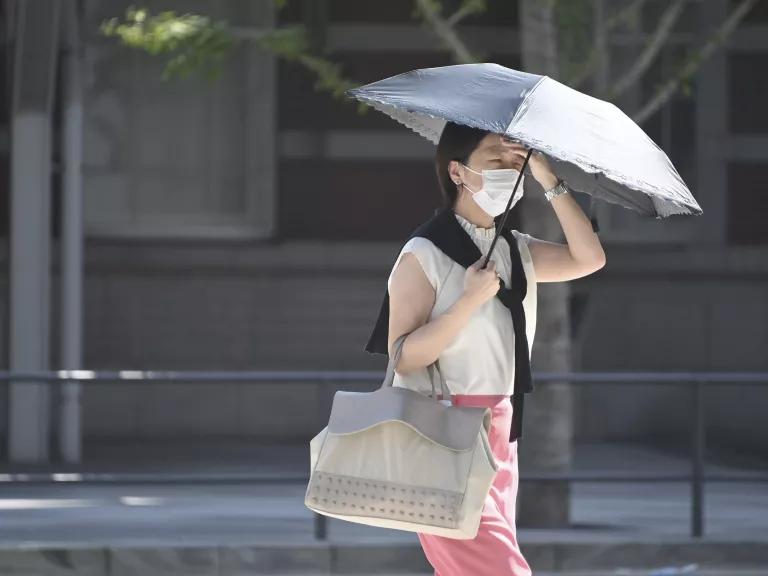
Tokyo during a record-breaking heat wave, August 13, 2020
The Yomiuri Shimbun via AP Images
Higher average temperatures
This change in global average temperature—seemingly small but consequential and climbing—means that, each summer, we are likely to experience increasingly sweltering heat waves. Even local news meteorologists are starting to connect strings of record-breaking days to new long-term trends, which are especially problematic in regions where infrastructure and housing have not been built with intensifying heat in mind. And heat waves aren’t just uncomfortable—they’re the leading cause of weather-related fatalities in the United States.
Longer-lasting droughts
Hotter temperatures increase the rate at which water evaporates from the air, leading to more severe and pervasive droughts . Already, climate change has pushed the American West into a severe “megadrought”—the driest 22-year stretch recorded in at least 1,200 years—shrinking drinking water supplies, withering crops , and making forests more susceptible to insect infestations. Drought can also create a positive feedback loop in which drier soil and less plant cover cause even faster evaporation.
More intense wildfires
This drier, hotter climate also creates conditions that fuel more vicious wildfire seasons—with fires that spread faster and burn longer—putting millions of additional lives and homes at risk. The number of large wildfires doubled between 1984 and 2015 in the western United States. And in California alone, the annual area burned by wildfires increased 500 percent between 1972 and 2018.
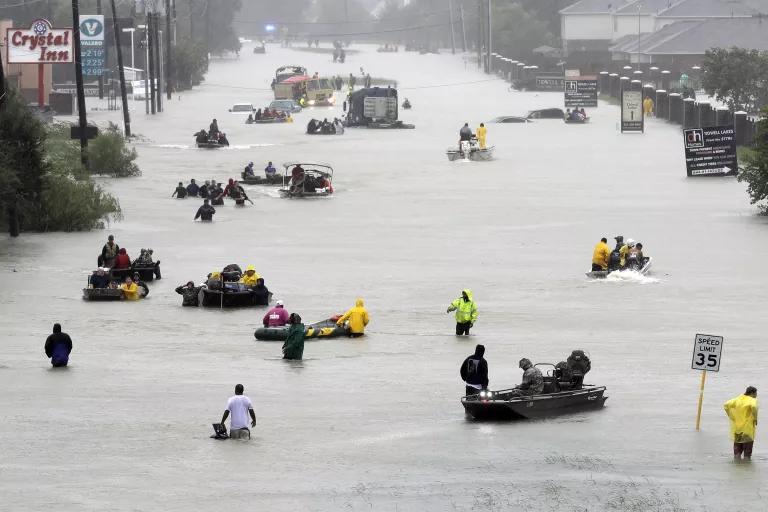
Evacuation after Hurricane Harvey in Houston, August 28, 2017
David J. Phillip/AP Photo
Stronger storms
Warmer air also holds more moisture, making tropical cyclones wetter, stronger, and more capable of rapidly intensifying. In the latest report from the IPCC , scientists found that daily rainfall during extreme precipitation events would increase by about 7 percent for each degree Celsius of global warming, increasing the dangers of flooding . The frequency of severe Category 4 and 5 hurricanes is also expected to increase. In 2017, Hurricane Harvey, a devastating Category 4 storm, dumped a record 275 trillion pounds of rain and resulted in dozens of deaths in the Houston area.
From the poles to the tropics, climate change is disrupting ecosystems. Even a seemingly slight shift in temperature can cause dramatic changes that ripple through food webs and the environment.
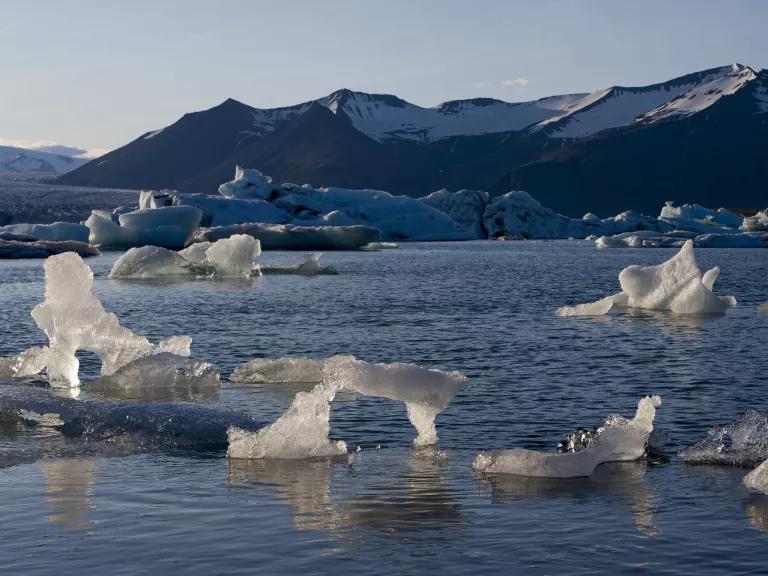
The lake at Jökulsárlón, a glacial lagoon in Iceland, which has grown because of continued glacial melting
Eskinder Debebe/UN Photo
Melting sea ice
The effects of climate change are most apparent in the world’s coldest regions—the poles. The Arctic is heating up twice as fast as anywhere else on earth, leading to the rapid melting of glaciers and polar ice sheets, where a massive amount of water is stored. As sea ice melts, darker ocean waters that absorb more sunlight become exposed, creating a positive feedback loop that speeds up the melting process. In just 15 years, the Arctic could be entirely ice-free in the summer.
Sea level rise
Scientists predict that melting sea ice and glaciers, as well as the fact that warmer water expands in volume, could cause sea levels to rise as much as 6.6 feet by the end of the century, should we fail to curb emissions. The extent (and pace) of this change would devastate low-lying regions, including island nations and densely populated coastal cities like New York City and Mumbai.
But sea level rise at far lower levels is still costly, dangerous, and disruptive. According to the 2022 Sea Level Rise Technical Report from the National Ocean Service, the United States will see a foot of sea level rise by 2050, which will regularly damage infrastructure, like roads, sewage treatment plants, and even power plants . Beaches that families have grown up visiting may be gone by the end of the century. Sea level rise also harms the environment, as encroaching seawater can both erode coastal ecosystems and invade freshwater inland aquifers, which we rely on for agriculture and drinking water. Saltwater incursion is already reshaping life in nations like Bangladesh , where one-quarter of the lands lie less than 7 feet above sea level.
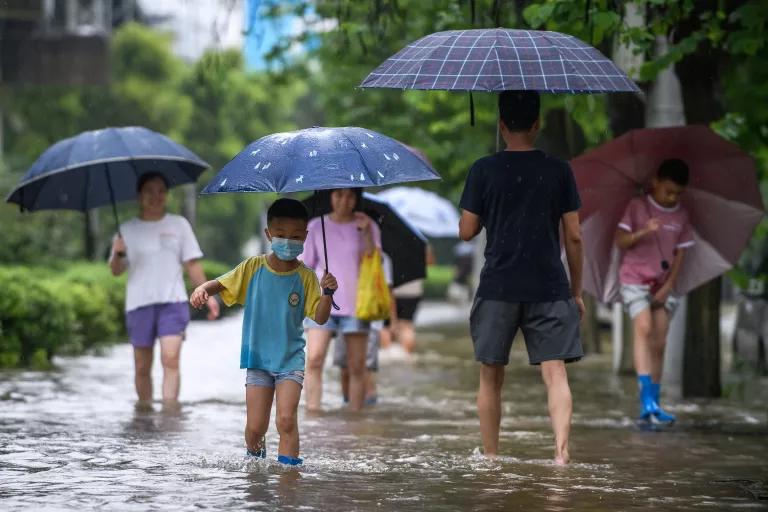
A waterlogged road, caused by rainstorm and upstream flood discharge, in the Shaoguan, Guangdong Province of China, June 21, 2022
Stringer/Anadolu Agency via Getty Images
In addition to coastal flooding caused by sea level rise, climate change influences the factors that result in inland and urban flooding: snowmelt and heavy rain. As global warming continues to both exacerbate sea level rise and extreme weather, our nation’s floodplains are expected to grow by approximately 45 percent by 2100. In 2022, deadly flooding in Pakistan—which inundated as much as a third of the country—resulted from torrential rains mixed with melting glaciers and snow.
Warmer ocean waters and marine heat waves
Oceans are taking the brunt of our climate crisis. Covering more than 70 percent of the planet’s surface, oceans absorb 93 percent of all the heat that’s trapped by greenhouse gases and up to 30 percent of all the carbon dioxide emitted from burning fossil fuels.
Temperature-sensitive fish and other marine life are already changing migration patterns toward cooler and deeper waters to survive, sending food webs and important commercial fisheries into disarray. And the frequency of marine heat waves has increased by more than a third . These spikes have led to mass die-offs of plankton and marine mammals.
To make matters worse, the elevated absorption of carbon dioxide by the ocean leads to its gradual acidification , which alters the fundamental chemical makeup of the water and threatens marine life that has evolved to live in a narrow pH band. Animals like corals, oysters, and mussels will likely feel these effects first, as acidification disrupts the calcification process required to build their shells.
Ecosystem stressors
Land-based ecosystems—from old-growth forests to savannahs to tropical rainforests—are faring no better. Climate change is likely to increase outbreaks of pests, invasive species, and pathogen infections in forests. It’s changing the kinds of vegetation that can thrive in a given region and disrupting the life cycles of wildlife, all of which is changing the composition of ecosystems and making them less resilient to stressors. While ecosystems have the capacity to adapt, many are reaching the hard limits of that natural capacity . More repercussions will follow as temperatures rise.
Climate change appears to be triggering a series of cascading ecological changes that we can neither fully predict nor, once they have enough momentum, fully stop. This ecosystem destabilization may be most apparent when it comes to keystone species that have an outsize- role in holding up an ecosystem’s structure.
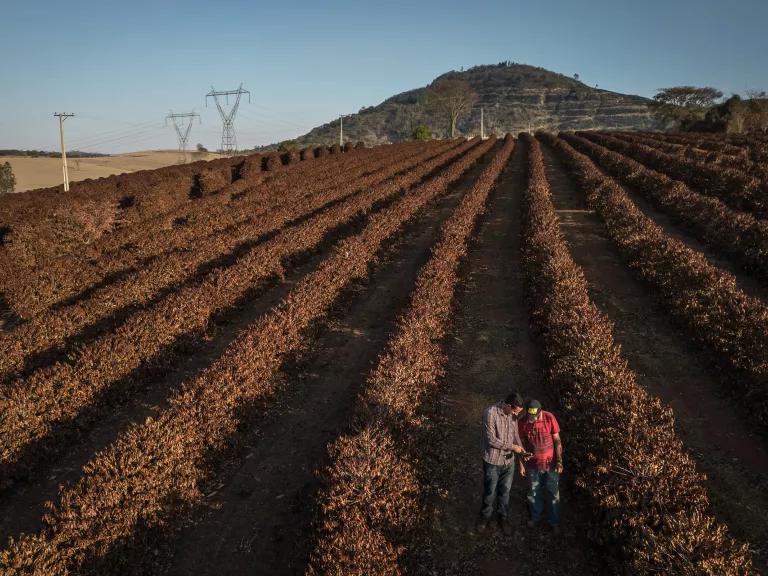
Coffee plants destroyed by frost due to extremely low temperatures near Caconde in the São Paulo state of Brazil, August 25, 2021
Jonne Roriz/Bloomberg via Getty Images
Less predictable growing seasons
In a warming world, farming crops is more unpredictable—and livestock, which are sensitive to extreme weather, become harder to raise. Climate change shifts precipitation patterns, causing unpredictable floods and longer-lasting droughts. More frequent and severe hurricanes can devastate an entire season’s worth of crops. Meanwhile, the dynamics of pests, pathogens, and invasive species—all of which are costly for farmers to manage—are also expected to become harder to predict. This is bad news, given that most of the world’s farms are small and family-run. One bad drought or flood could decimate an entire season’s crop or herd. For example, in June 2022, a triple-digit heat wave in Kansas wiped out thousands of cows. While the regenerative agriculture movement is empowering rural communities to make their lands more resilient to climate change, unfortunately, not all communities can equitably access the support services that can help them embrace these more sustainable farming tactics.
Reduced soil health
Healthy soil has good moisture and mineral content and is teeming with bugs, bacteria, fungi, and microbes that in turn contribute to healthy crops. But climate change, particularly extreme heat and changes in precipitation, can degrade soil quality. These impacts are exacerbated in areas where industrial, chemical-dependent monoculture farming has made soil and crops less able to withstand environmental changes.
Food shortages
Ultimately, impacts to our agricultural systems pose a direct threat to the global food supply. And food shortages and price hikes driven by climate change will not affect everyone equally: Wealthier people will continue to have more options for accessing food, while potentially billions of others will be plummeted into food insecurity—adding to the billions that already have moderate or severe difficulty getting enough to eat.

The poison dart frog’s survival is currently threatened by habitat loss and climate change.
Chris Mattison/Minden Pictures
It’s about far more than just the polar bears: Half of all animal species in the world’s most biodiverse places, like the Amazon rainforest and the Galapagos Islands, are at risk of extinction from climate change. And climate change is threatening species that are already suffering from the biodiversity crisis, which is driven primarily by changes in land and ocean use (like converting wild places to farmland) and direct exploitation of species (like overfishing and wildlife trade). With species already in rough shape—more than 500,000 species have insufficient habitat for long-term survival—unchecked climate change is poised to push millions over the edge.
Climate change rapidly and fundamentally alters (or in some cases, destroys) the habitat that wildlife have incrementally adapted to over millennia. This is especially harmful for species’ habitats that are currently under threat from other causes. Ice-dependent mammals like walruses and penguins, for example, won’t fare well as ice sheets shrink. Rapid shifts in ocean temperatures stress the algae that nourishes coral reefs, causing reefs to starve—an increasingly common phenomenon known as coral bleaching . Disappearing wetlands in the Midwest’s Prairie Pothole Region means the loss of watering holes and breeding grounds for millions of migratory birds. (Many species are now struggling to survive, as more than 85 percent of wetlands have been lost since 1700). And sea level rise will inundate or erode away many coastal habitats, where hundreds of species of birds, invertebrates, and other marine species live.
Many species’ behaviors—mating, feeding, migration—are closely tied to subtle seasonal shifts, as in temperature , precipitation level, and foliage. In some cases, changes to the environment are happening quicker than species are able to adapt. When the types and quantity of plant life change across a region, or when certain species bloom or hatch earlier or later than in the past, it impacts food and water supplies and reverberates up food chains.
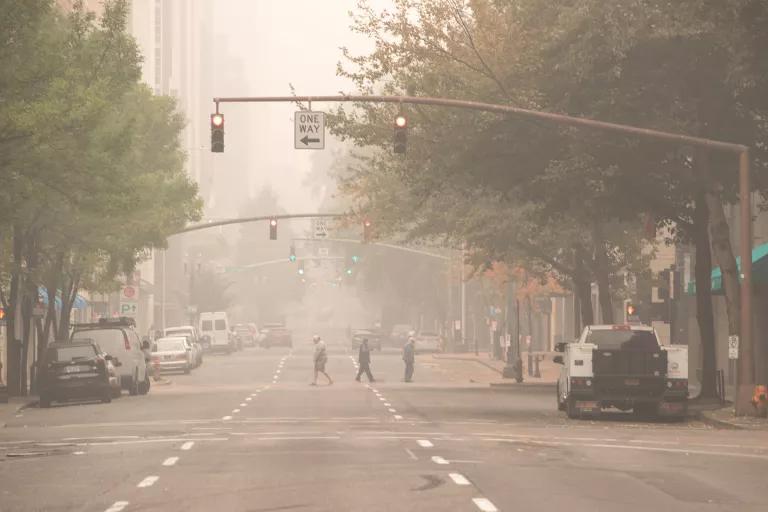
Wildfire smoke–filled air in Multnomah County, Oregon, September 16, 2020
Motoya Nakamura/Multnomah County Communications, CC BY NC-ND 4.0
Ultimately, the way climate change impacts weather, the environment, animals, and agriculture affects humanity as well. But there’s more. Around the world, our ways of life—from how we get our food to the industries around which our economies are based—have all developed in the context of relatively stable climates. As global warming shakes this foundation, it promises to alter the very fabric of society. At worst, this could lead to widespread famine, disease, war, displacement , injury, and death. For many around the world, this grim forecast is already their reality. In this way, climate change poses an existential threat to all human life.
Human health
Climate change worsens air quality . It increases exposure to hazardous wildfire smoke and ozone smog triggered by warmer conditions, both of which harm our health, particularly for those with pre-existing illnesses like asthma or heart disease.
Insect-borne diseases like malaria and Zika become more prevalent in a warming world as their carriers are able to exist in more regions or thrive for longer seasons. In the past 30 years, the incidence of Lyme disease from ticks has nearly doubled in the United States, according to the U.S. Environmental Protection Agency (EPA). Thousands of people face injury, illness , and death every year from more frequent or more intense extreme weather events. At a 2-degree Celsius rise in global average temperature, an estimated one billion people will face heat stress risk. In the summer of 2022 alone, thousands died in record-shattering heat waves across Europe. Weeks later, dozens were killed by record-breaking urban flooding in the United States and South Korea—and more than 1,500 people perished in the flooding in Pakistan , where resulting stagnant water and unsanitary conditions threaten even more.
The effects of climate change—and the looming threat of what’s yet to come—take a significant toll on mental health too. One 2021 study on climate anxiety, published in the journal Nature , surveyed 10,000 young people from 10 different countries. Forty-five percent of respondents said that their feelings about climate change, varying from anxiety to powerlessness to anger, impacted their daily lives.
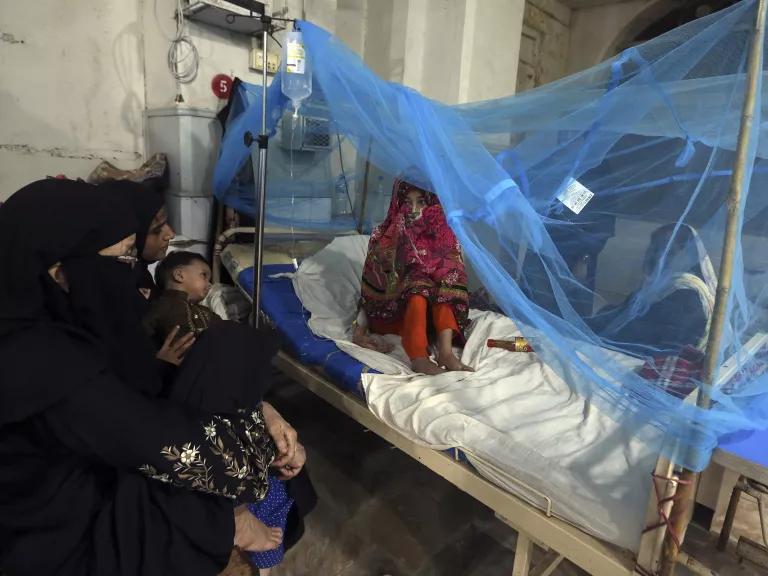
A patient with dengue fever, a mosquito-borne disease, in Karachi, Pakistan, where the spread of diseases worsened due to flooding, September 2022
Fareed Khan/AP Photo
Worsening inequity
The climate crisis exacerbates existing inequities. Though wealthy nations, such as the United States, have emitted the lion’s share of historical greenhouse gas emissions, it’s developing countries that may lack the resources to adapt and will now bear the brunt of the climate crisis. In some cases, low-lying island nations—like many in the Pacific —may cease to exist before developed economies make meaningful reductions to their carbon emissions.
Even within wealthier nations, disparities will continue to grow between those rich enough to shield themselves from the realities of climate change and those who cannot. Those with ample resources will not be displaced from their homes by wars over food or water—at least not right away. They will have homes with cool air during heat waves and be able to easily evacuate when a hurricane is headed their way. They will be able to buy increasingly expensive food and access treatment for respiratory illness caused by wildfire smoke. Billions of others can’t—and are paying the highest price for climate pollution they did not produce.
Hurricane Katrina, for example, displaced more than one million people around the Gulf Coast. But in New Orleans , where redlining practices promoted racial and economic segregation, the city’s more affluent areas tended to be located on higher ground—and those residents were able to return and rebuild much faster than others.
Displacement
Climate change will drive displacement due to impacts like food and water scarcities, sea level rise, and economic instability. It’s already happening. The United Nations Global Compact on Refugees recognizes that “climate, environmental degradation and disasters increasingly interact with the drivers of refugee movements.” Again, communities with the fewest resources—including those facing political instability and poverty—will feel the effects first and most devastatingly.

A flood-damaged home in Queens, New York, December 1, 2021
K.C. Wilsey/FEMA
Economic impacts
According to the 2018 National Climate Assessment, unless action is taken, climate change will cost the U.S. economy as much as $500 billion per year by the end of the century. And that doesn’t even include its enormous impacts on human health . Entire local industries—from commercial fishing to tourism to husbandry—are at risk of collapsing, along with the economic support they provide.
Recovering from the destruction wrought by extreme weather like hurricanes, flash floods, and wildfires is also getting more expensive every year. In 2021, the price tag of weather disasters in the United States totaled $145 billion —the third-costliest year on record, including a number of billion-dollar weather events.
The first wave of impacts can already be felt in our communities and seen on the nightly news. The World Health Organization says that in the near future, between 2030 and 2050, climate change is expected to cause an additional 250,000 deaths per year from things like malnutrition, insect-borne diseases, and heat stress. And the World Bank estimates that climate change could displace more than 140 million people within their home countries in sub-Saharan Africa, South Asia, and Latin America by 2050.
But the degree to which the climate crisis upends our lives depends on whether global leaders decide to chart a different course. If we fail to curb greenhouse gas emissions, scientists predict a catastrophic 4.3 degrees Celsius , (or around 8 degrees Fahrenheit) of warming by the end of the century. What would a world that warm look like? Wars over water. Crowded hospitals to contend with spreading disease. Collapsed fisheries. Dead coral reefs. Even more lethal heat waves. These are just some of the impacts predicted by climate scientists .
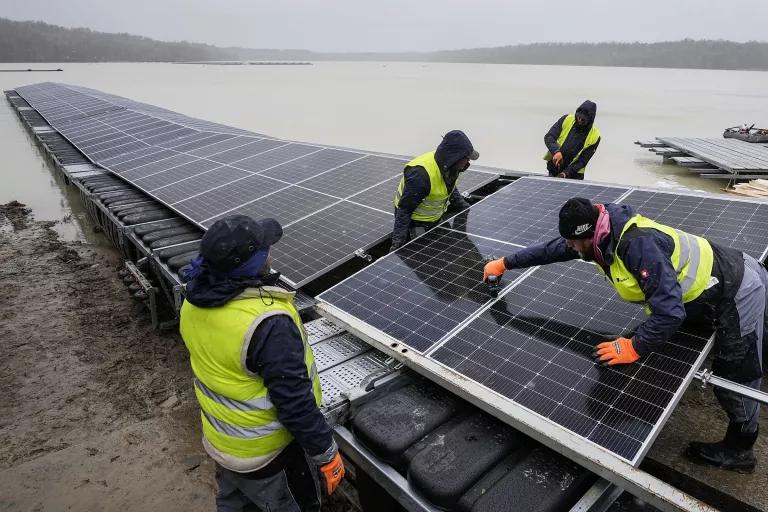
Solar panel installation at a floating photovoltaic plant on a lake in Haltern am See, Germany, April 2022
Martin Meissner/AP Photo
Climate mitigation, or our ability to reverse climate change and undo its widespread effects, hinges on the successful enactment of policies that yield deep cuts to carbon pollution, end our dependence on dangerous fossil fuels and the deadly air pollution they generate, and prioritize the people and ecosystems on the frontlines. And these actions must be taken quickly in order to ensure a healthier present day and future. In one of its latest reports, the IPCC presented its most optimistic emissions scenario, in which the world only briefly surpasses 1.5 degrees of warming but sequestration measures cause it to dip back below by 2100. Climate adaptation , a term that refers to coping with climate impacts, is no longer optional ; it’s necessary, particularly for the world’s most vulnerable populations.
By following the urgent warnings of the IPCC and limiting warming, we may be able to avoid passing some of the critical thresholds that, once crossed, can lead to potentially irreversible, catastrophic impacts for the planet, including more warming. These thresholds are known as climate tipping points and refer to when a natural system "tips" into an entirely different state. One example would be Arctic permafrost, which stores carbon like a freezer: As the permafrost melts from warming temperatures, it releases carbon dioxide into the atmosphere.
Importantly, climate action is not a binary pass-fail test. Every fraction of a degree of warming that we prevent will reduce human suffering and death, and keep more of the planet’s natural systems intact. The good news is that a wide range of solutions exist to sharply reduce emissions, slow the pace of warming, and protect communities on the frontlines of climate impacts. Climate leaders the world over—those on major political stages as well as grassroots community activists—are offering up alternative models to systems that prioritize polluters over people. Many of these solutions are rooted in ancestral and Indigenous understandings of the natural world and have existed for millennia. Some solutions require major investments into clean, renewable energy and sustainable technologies. To be successful, climate solutions must also address intersecting crises—like poverty, racism, and gender inequality —that compound and drive the causes and impacts of the climate crisis. A combination of human ingenuity and immense political will can help us get there.
This NRDC.org story is available for online republication by news media outlets or nonprofits under these conditions: The writer(s) must be credited with a byline; you must note prominently that the story was originally published by NRDC.org and link to the original; the story cannot be edited (beyond simple things such as grammar); you can’t resell the story in any form or grant republishing rights to other outlets; you can’t republish our material wholesale or automatically—you need to select stories individually; you can’t republish the photos or graphics on our site without specific permission; you should drop us a note to let us know when you’ve used one of our stories.
We need climate action to be a top priority in Washington.
Tell President Biden and Congress to slash climate pollution and reduce our dependence on fossil fuels.

Urge President Biden and Congress to make equitable climate action a top priority in 2024
Related stories.
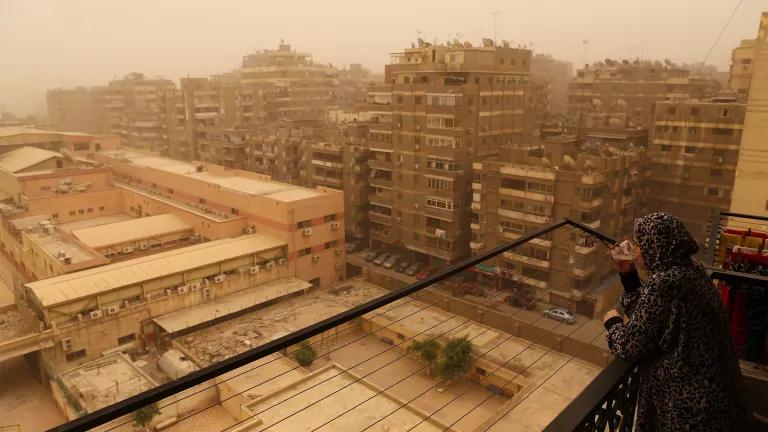
COP27: The Issues, the Tensions, and the Urgent Need for Unity on Climate
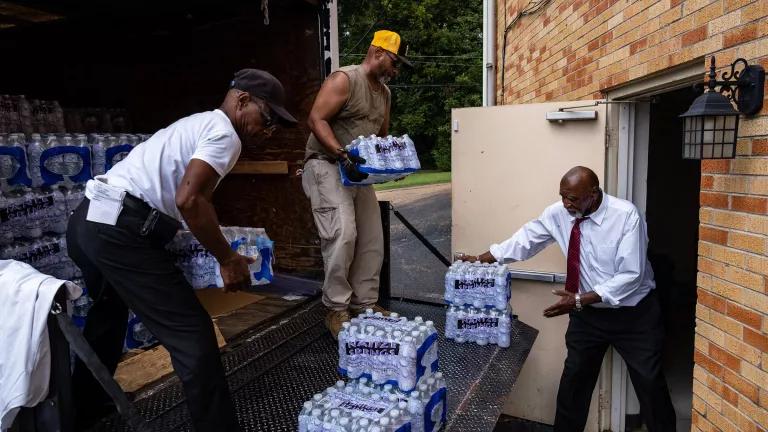
Mutual Aid and Disaster Justice: “We Keep Us Safe”

Climate Change at the Doctor’s Office
When you sign up, you’ll become a member of NRDC’s Activist Network. We will keep you informed with the latest alerts and progress reports.
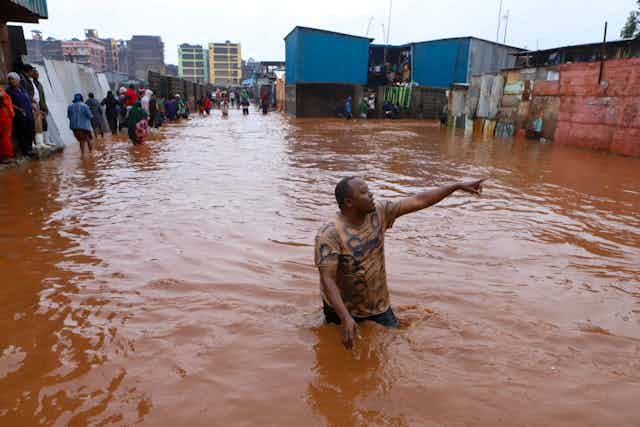
Kenya’s devastating floods expose decades of poor urban planning and bad land management
Consultant in Hydrology and Water Resources, Kenya citizen, Visiting Research Fellow, King's College London
Disclosure statement
Sean Avery is affiliated with: Hydrological Society of Kenya, Water Resource Associates, Kings College London, University of Gent
King's College London provides funding as a member of The Conversation UK.
View all partners
Floods in Kenya killed at least 169 people between March and April 2024. The most catastrophic of these deaths occurred after a flash flood swept through a rural village killing 42 people . Death and destruction have also occurred in the capital, Nairobi, a stark reminder of the persistent failure to keep abreast of the city’s rapid urbanisation needs. Sean Avery , who has undertaken numerous flood and drainage studies throughout Africa, unpacks the problems and potential solutions.
Are floods in Kenya causing more damage? If so, why?
Floods are the natural consequence of storm rainfall and have an important ecological role . They inundate flood plains where silts settle, riverbed aquifers are recharged and nutrients are gathered. Annual rainfall in Kenya varies from 2,000mm in the western region to less than 250mm in the drylands covering over 80% of Kenya. But storm rainfalls are widespread. This means that floods can occur in any part of the country.
The impact of floods has become more severe due to a number of factors.
The first is how much water runs off. In rural areas, changes to the landscape have meant that there’s been an increase in the amount of storm runoff generated from rainfall. This is because the natural state of the land has been altered through settlement, roads, deforestation, livestock grazing and cultivation. As a result, a greater proportion of rainfall runs off. This runoff is more rapid and erosive, and less water infiltrates to replenish groundwater stores.
The East African Flood Model , a standard drainage design tool, demonstrates that by reducing a forested catchment into a field for livestock pasture, for instance, the peak flood magnitude can increase 20-fold. This form of catchment degradation leads to landslides, dams can breach, and road culverts and irrigation intakes are regularly washed away.
Land degradation in sub-Saharan rangelands is omnipresent, with over 90% rangeland degradation reported in Kenya’s northern drylands . Kenyan research has recorded dramatic increases in stormwater runoff due to overgrazing.
Second, human pressure in urban areas – including encroachment into riparian zones and loss of natural flood storage buffers through the destruction of wetlands – has increased flood risks. Riparian zones are areas bordering rivers and other bodies of water.
By 2050, half of Kenya’s population will live in urban areas. Green space is progressively being filled with buildings and pavements. A large proportion of urban population lives in tin-roofed slums and informal settlements lacking adequate drainage infrastructure. As a result, almost all of the storm rainfall is translated into rapid and sometimes catastrophic flooding.
Third, flood risks are worse for people who have settled in vacant land which is often in low-lying areas and within flood plains. In these areas, inundation by flood waters is inevitable.
Fourth, Nairobi’s persistent water supply shortages have led to a proliferation of boreholes whose over-abstraction has resulted in a dramatic decline in the underground water table’s levels. This leads to aquifer compression, which is compounded by the weight of buildings. The result is ground level subsidence , which creates low spots where stormwater floods collect.
What should be done to minimise the risks?
Rural areas require a different set of solutions.
Natural watercourses throughout Kenya are being scoured out by larger floods due to land use pressures. These watercourses are expanding and riparian vegetation cover is disappearing. The flood plains need space to regenerate the natural vegetation cover as this attenuates floods, reducing the force of runoff and erosion.
There are existing laws to protect riverbanks, and livestock movements in these areas must also be controlled. Any building or informal settlement within riparian areas is illegal and would otherwise be exposed to the dangers of floods. Enforcement is a challenge, however, as these areas are favoured by human activities and often these people are among the poorest.
Urban areas have a host of particular challenges that need to be addressed.
Take Nairobi, Kenya’s capital city. The physical planning process is hindered by corruption . Inappropriate and unsafe developments proliferate alongside inadequate water supply, wastewater and solid waste disposal infrastructure. Sewage effluent is often discharged into stormwater drains, even in high-class areas of the city. And there is little control of development in the growing urban centres bordering Nairobi, with transport corridors being congested. Throughout the country, laws that protect riparian zones are flouted.
None of this is sustainable.
Each municipality is obliged to provide infrastructure that includes an effective engineered stormwater drainage network. And in parallel, wastewater and solid wastes must be separately managed.
The typical stormwater drainage network comprises adequately sized earth and lined channels, and pipes and culverts that convey the stormwater to the nearest watercourse. Constant maintenance is essential, especially before the onset of rains, to avoid blockage by garbage and other human activities.
Modern-day urban flood mitigation measures include the provision of flood storage basins. Unfortunately this is impossible in Nairobi where developments are built right up to the edge of watercourses. Constrained channels thereby cause upstream flooding as there is nowhere else for the water to go.
Attempts have been made to reverse urban riparian zone encroachments , but these efforts faltered due to legal repercussions. To this day, unscrupulous developers encroach with impunity .
It’s essential that the authorities demarcate riparian boundaries and set aside buffer zones that cannot be “developed”.
- Urbanisation
- Deforestation
- Groundwater
- Water catchment
- East Africa
- Sub-Saharan Africa
- Climate crisis

Lecturer / Senior Lecturer - Marketing

Communications and Engagement Officer, Corporate Finance Property and Sustainability

Assistant Editor - 1 year cadetship

Executive Dean, Faculty of Health

Lecturer/Senior Lecturer, Earth System Science (School of Science)
Why has the flooding in Kenya been so devastating?
Government criticised over poor infrastructure as 210 people killed, thousands displaced and a cyclone is on the way.

Torrential rains have caused devastating floods in Kenya, where more than 200 people have died, thousands have been displaced and nearly 2,000 schools have been destroyed. All remaining schools have been shut down until further notice.
Rains have been ravaging Kenya since March during some of the most catastrophic weather events in the country for years. Now, Cyclone Hidaya is expected to hit Kenya and neighbouring Tanzania late on Friday, which could further worsen the flooding. This comes amid recent heavy rainfall across East Africa.
Keep reading
Kenya, tanzania brace for cyclone hidaya as flood death toll rises, kenya flooding death toll climbs to 70 since march, photos: kenya searches for dozens amid deadly floods, photos: deadly floods wreak havoc in kenya’s capital.
Here is more about the floods in Kenya so far:
How many people have been killed and injured in Kenya’s floods?
The flooding has wreaked havoc in Kenya, causing death and destruction. Here are the latest figures from Kenya’s Ministry of Interior on Friday:
- At least 210 people have been killed, including 20 in a recent 24-hour period, and 125 have been injured.
- Ninety people have been reported missing with dozens believed to be lost under the debris .
- About 3,100 households have been displaced.
- The schools that have been destroyed number 1,967.
“There are many people who cannot be found. Many of my neighbours cannot be found,” Jane Wambui, a flood survivor, told Al Jazeera.
Many of those who have been worst affected by the flooding live in informal settlements, such as Nairobi’s Mathare, where residents have accused the government of neglecting them.
“The government says they deployed the military and the national youth service and they are stepping up search and rescue missions, but where are they? It has been a week, and where are they? I have not seen anyone here in Mathare. Not one person from the government has come to help us,” Mathare resident Collins Obondo said.
URGENT ALERT: After the heavy rains last night, Mathare 4A has flooded again this morning at 2 am. We desperately need tents to pitch across higher ground in Mathare, especially for children & pregnant women. Please contact: 0705577474 @KenyaRedCross @SakajaJohnson @FoundationGf — Mathare Social Justice Centre (MSJC) (@MathareSJustice) April 29, 2024
Where in Kenya is the flooding the worst?
In the town of Mai Mahiu in southern Kenya, a dam burst on Monday, killing at least 48 people.
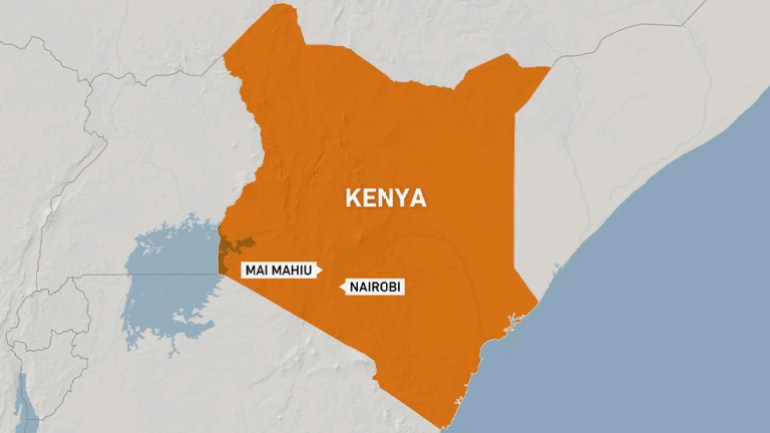
Mai Mahiu in Nakuru County is west of the capital, Nairobi, which is expected to be hit by more heavy rains, according to a warning issued on X on Friday by Kenya’s Meteorological Department.
🌧️ Attention Nairobi Metropolitan Residents! Prepare for HEAVY to VERY HEAVY rainfall this Friday. Stay weather-aware! Keep updated with https://t.co/NHZNDsKHAW . For further details, please visit our website at https://t.co/NHZNDsKHAW , pic.twitter.com/X4J64irk2H — Kenya Met Department 🇰🇪 (@MeteoKenya) May 3, 2024
What has caused the flooding in Kenya?
While climate events such as El Nino – the warming of the surface water of the Pacific Ocean, which causes heavy rainfall in some parts of the world – have been linked to the increase in rain, many Kenyans believe the flooding has been exacerbated by lack of investment by the government.
In Mathare, locals blamed the flooding on poorly maintained, frequently blocked drains that have caused water to accumulate.
Flood survivor Nahason Igeria told Al Jazeera: “This was caused by the state national Railways Corporation. They are the ones who built the culvert downstream and the tunnel upstream. It should be their responsibility to maintain the system.”
On Thursday, Human Rights Watch published findings that low-income neighbourhoods, such as Mathare, had been severely impacted by the floods due to “less solid structures, congestion and poor sanitation infrastructure”.
In a statement, Greenpeace Africa Executive Director Oulie Keita said the floods are a “stark reminder of the human cost of the climate crisis”, adding, “Some of the damage was further worsened by misinformed development.”
How has the Kenyan government responded to the floods?
In anticipation of Cyclone Hidaya, President William Ruto’s government has ordered mandatory evacuations for residents living close to 178 dams and water reservoirs in 33 counties.
During his national address to the nation on Friday, Ruto said he had directed the Ministry of Education to postpone the reopening of schools for their second term until further notice. Besides the schools destroyed since March, many other schools are being used to shelter those who have been displaced by the floods.
Ruto’s approach to managing the floods has been criticised by residents of Mai Mahiu and of several informal settlements that have been devastated by floodwaters.
Human Rights Watch said the government failed to act following the Meteorological Department’s warnings in May last year that Kenya would experience enhanced rainfall due to El Nino and it would continue into 2024.
While the government set aside at least 10 billion Kenyan shillings ($80m) in preparation for a nationwide response, it did not outline a plan of action. In October, Ruto mistakenly said Kenya would not experience El Nino rainfall as had been predicted.
The Meteorological Department now expects the rainfall to continue until June.
What impact is Cyclone Hidaya expected to have?
Cyclone Hidaya is likely to result in “heavy rainfall, large waves and strong winds that could affect marine activities in the Indian Ocean”, the presidential office said.
The cyclone is also expected to make the search for the bodies of those missing and feared dead even more difficult, experts said.

IMAGES
VIDEO
COMMENTS
Floods Can Harm Wildlife. Flooding can have a negative effect on wildlife, causing drowning, disease proliferation, and habitat destruction. In 2012, hundreds of animals, including many vulnerable one-horned rhinos ( Rhinoceros unicornis ), were killed in floods that swamped Kaziranga National Park in the Indian state of Assam.
500+ words Essay on Flood. Flood is one of the most dangerous natural disasters. It happens when excessive water is collected in any area. It usually happens due to heavy rainfall. India is highly prone to flood. There are many regions in the country that face this natural disaster because of the overflowing of rivers.
However, one of the biggest causes of floods, especially in cases of flash floods, is excessive and heavy rainfall. When rainfall in low-lying areas and urban environments fall faster than the ground can absorb, water height rapidly rise, resulting in floods. Extreme rainfall in river courses contribute to flooding as well, as water travels ...
A flood, put simply, is the accumulation of water over normally dry land. It's typically caused by the overflow of coastal or inland waters (like rivers and streams) or by an unusual ...
flood, high-water stage in which water overflows its natural or artificial banks onto normally dry land, such as a river inundating its floodplain.The effects of floods on human well-being range from unqualified blessings to catastrophes.The regular seasonal spring floods of the Nile River prior to construction of the Aswān High Dam, for example, were depended upon to provide moisture and ...
To describe the severity of a flood, though, experts will often use the more simple term "a 100-year flood," to describe a flood that has a 1 percent chance of striking in any given year ...
The effects are not always negative, however, and some ecosystems even rely on flooding each season. Drowning, Erosion, Sedimentation. Flooding can have a negative effect on wildlife, spreading disease, destroying habitats, and causing animals to drown. In 2012, hundreds of animals, including many vulnerable one-horned rhinos ( Rhinoceros ...
Climate change and floods—how they are connected. Floods are made more likely by the more extreme weather patterns caused by long-term global climate change. Change in land cover—such as removal of vegetation—and climate change increase flood risk. Extreme floods can be triggered by intense precipitation, longer duration, close repetition ...
Floods harm the ecosystem and the habitat and have a detrimental effect. Floods cause death to both living and human beings. Destruction of land and infrastructure has a devastating effect on the impacted region's economies, and commercial development is at a standstill due to damaged livelihoods. ... 10 Lines on Flood Essay in English. As a ...
Impacts of disastrous river floods. Disastrous river floods directly affect, on average, 125 million people annually, by evacuation, homelessness, injury or death 103, and have a wide range of ...
Flooding has a range of impacts on humans, including: people can be injured or killed by flooding. floodwater is often contaminated with sewage, which can lead to illness and affect clean drinking water. power supplies can be disrupted. businesses can be forced to shut down. services such as hospitals and schools can close.
Impacts of flood on the environment. Floods have a wide range of negative and positive effects, depending on their location, magnitude, depth, and intensity. Individuals and communities are ...
Flash floods are a growing threat in some of the world's driest regions. Deluges can trigger sudden and rapid torrents of run-off that flow down dry river beds and rocky channels. Because ...
Floods have been a recurring natural disaster that has affected millions of people worldwide. Whether caused by heavy rainfall, snowmelt, or hurricanes, floods have the potential to cause significant damage to property, infrastructure, and the environment. In this essay, we will reflect on the impact of floods, the factors contributing to their ...
Flood Essay for Students in English. Flood is a natural phenomenon that occurs due to various geological processes. It is one of the most dangerous natural calamities that can cause lethal damage. The main reason for flooding is excessive rainfall. Rainwaters are collected usually in rivers and are prevented from flooding through dams.
We should look at flood avoidance and its long term side-effects throughout this essay about floods. Nevertheless, it really is equally risky, but whatever cause might be. This has some negative effects. Floods cause harm to living conditions or recovery from this tragedy takes a very long time. The effects of flooding should therefore be ...
The primary effects of flood damage include physical damages like damage to bridges, cars, buildings, sewer systems, roadways, and even casualties like people and livestock death due to drowning. The primary effect of floods is due to direct contact with the flood waters. The velocity of water tends to be high in floods and consequently ...
In many cases, the flooding of rivers can have terrible effects. Flooding is one of the most common types of natural disaster, and the results are often deadly. A 1931 flood in China was one of the worst flooding events in recorded history. As many as several million people died. Floods affect humans, but they also affect the environment.
Flood is an overflow of water on land. It causes sometimes because of overflow of river water, it also causes due to heavy rainfall and overflow becomes out of limit. During flood condition of people and animals becomes very critical. Always it is not necessary that because of heavy rainfall flood occurs; it can also be caused due to storm and ...
endogeneity of floods. The third and fourth essays explore the potential transmission channels through which floods may affect armed conflict. The third essay shows that large floods, by displacing thousands of people, increase the probability of conflict incidence in the receiving areas. The effect is larger in
Floods are caused by many things. Many times it rains too much, other times a dam breaks; however, the effects of floods devastating. Floods can cause environmental losses as well and economical losses, land is washed away, homes are ruined, and people sometimes even die. This essay is about the causes and effects that flood have on our world.
Flooding has both direct and indirect impacts on health . Increased deaths and injury are direct effects of flooding with 90% of these direct effects having occurred in developing countries like Nigeria (Zorn Citation 2018). Nigeria's fledgling health sector suffers setbacks from annual flooding disasters.
One bad drought or flood could decimate an entire season's crop or herd. For example, in June 2022, a triple-digit heat wave in Kansas wiped out thousands of cows.
Published: May 1, 2024 5:17am EDT. Floods in Kenya killed at least 169 people between March and April 2024. The most catastrophic of these deaths occurred after a flash flood swept through a rural ...
01:52. By Sarah Shamim. 3 May 2024. Torrential rains have caused devastating floods in Kenya, where more than 200 people have died, thousands have been displaced and nearly 2,000 schools have been ...
Examining the relationship between vulnerability of the built environment and community recovery is crucial for understanding disaster resilience. Yet, this relationship is rather neglected in the existing literature due to previous limitations in the availability of empirical datasets needed for such analysis. In this study, we combine fine-resolution flood damage claims data (composed of ...
The Year of the Flood is the second book in Margaret Atwood's MaddAddam Trilogy. As a Canadian literary queen, Margaret mainly explores the issue of women's situation and prospects in the society. She depicts the current situation of women with delicate strokes, and The Year of the Flood is a typical example of this. This novel depicts the post-apocalyptic scenario faced by mankind after a ...